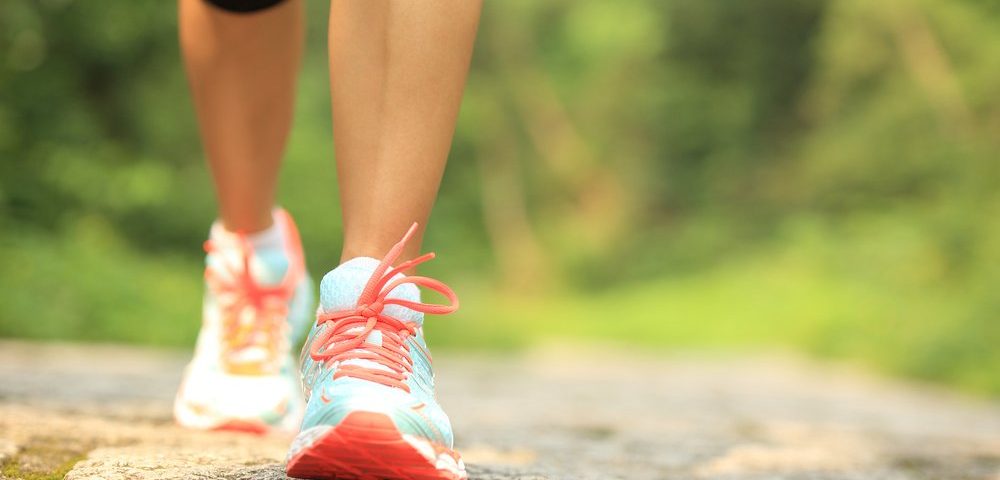
Exercise isn’t quite the first thing that springs to mind when you’re in chronic pain.
Many have the same issue with depression. Depression reduces feelings of motivation, and though we know the positive effects of exercise for our mental health, pulling ourselves out of the space we’re in to do it is a lot more challenging.
Endometriosis and exercise have a similar relationship. Feeling exhausted and in chronic pain often can make us not want to do any physical activity at all. Yet, research has shown that exercise can help improve our energy levels, improve our surgery recovery time, help manage symptoms, and even lower estrogen.
As my fatigue with both endometriosis and depression has increased over the years, my physical activity reduced to nil — until now. Having isolated myself inside my home, I realized that trying to get to the gym or a pool was just not going to happen. Yet, during the past 10 months, I’ve seen a small miracle occur.
In a desperate effort to feel well again, I found videos online and began doing a little bit of exercise in the mornings before work. This, of course, was not easy. Waking up has been a very real battle for years now, and it had been getting worse. In order to manage even just three minutes of yoga, my partner would wake me with an herbal tea and a blanket and coax me out of bed, having set up my mat and laptop for me. Essentially, all I had to do was turn up.
Most days I’d end up only having enough time to do a few minutes of a 5- or 10-minute video, but some days, I got through the entire thing. Either way, it made a difference. My mind felt clearer for the rest of the day, I felt more positive, I had more energy, I felt like I had actually woken up.
Bit by bit, my depression shrunk, and my fatigue became a bit more manageable. I still find days and weeks when I don’t have time, or I just can’t make it out of bed, but I always feel the difference when I don’t — and eventually, I find my way back to the mat.
Certain exercises aren’t going to be for all of us. I don’t think I’ll ever set foot in a gym again. Now I know where the happy zone is, but that doesn’t necessarily mean that yoga at home is the thing for everyone. So, a breakdown of some of my favorite forms of exercise and the benefits for endometriosis follows:
Yoga
While yoga won’t necessarily get your heart rate up like cardio will, it does leave you feeling good. Yoga is about being present and mindful. Essentially, it’s a session of physical mindfulness. Yoga can help you calm down, find some “you” time, slow down the noise in your brain, and improve your relationship with your body. Yoga also is really useful when you’re in pain in your pelvic region. There are lots of videos of yoga for period pain, and I personally use yoga as pain management during a flare-up.
Weight training and calisthenics
Weight training — exercises on the mat using weights or even without weights — and calisthenics have been a huge energy booster for me. Building muscle strength has helped me see that my body can be strong and can change, and it shows me what I am capable of.
Pilates
I really enjoy Pilates, as to me, it feels like a cross between calisthenics and yoga. Pilates is again on a mat and is a type of exercise that improves muscle strength and flexibility. It can be very helpful for reducing the muscle pain and tenseness we get from endometriosis. Like yoga, it’s calmer and focused, and so it can improve mental alertness, which is helpful if you suffer from endo brain fog, as I do!
Walking
Walking fast or jogging will increase the heart rate and cause a sweat, which boosts levels of happy hormones — endorphins — that not only help bring relief from stress and depression, but also can improve our experience of pain.
If I’m tired already, I find walking can tire me more, especially if I’m dragging my feet reluctantly. But if I commit and power walk around the green, that’s when I feel a new rush of energy.
Of course, walking can be difficult with endometriosis, so listen to your body. Don’t go for a walk if you think you’ll struggle to get back home, and talk to your doctor if you have any concerns.
***
Note: Endometriosis News is strictly a news and information website about the disease. It does not provide medical advice, diagnosis, or treatment. This content is not intended to be a substitute for professional medical advice, diagnosis, or treatment. Always seek the advice of your physician or other qualified health provider with any questions you may have regarding a medical condition. Never disregard professional medical advice or delay in seeking it because of something you have read on this website. The opinions expressed in this column are not those of Endometriosis News or its parent company, BioNews Services, and are intended to spark discussion about issues pertaining to endometriosis.

